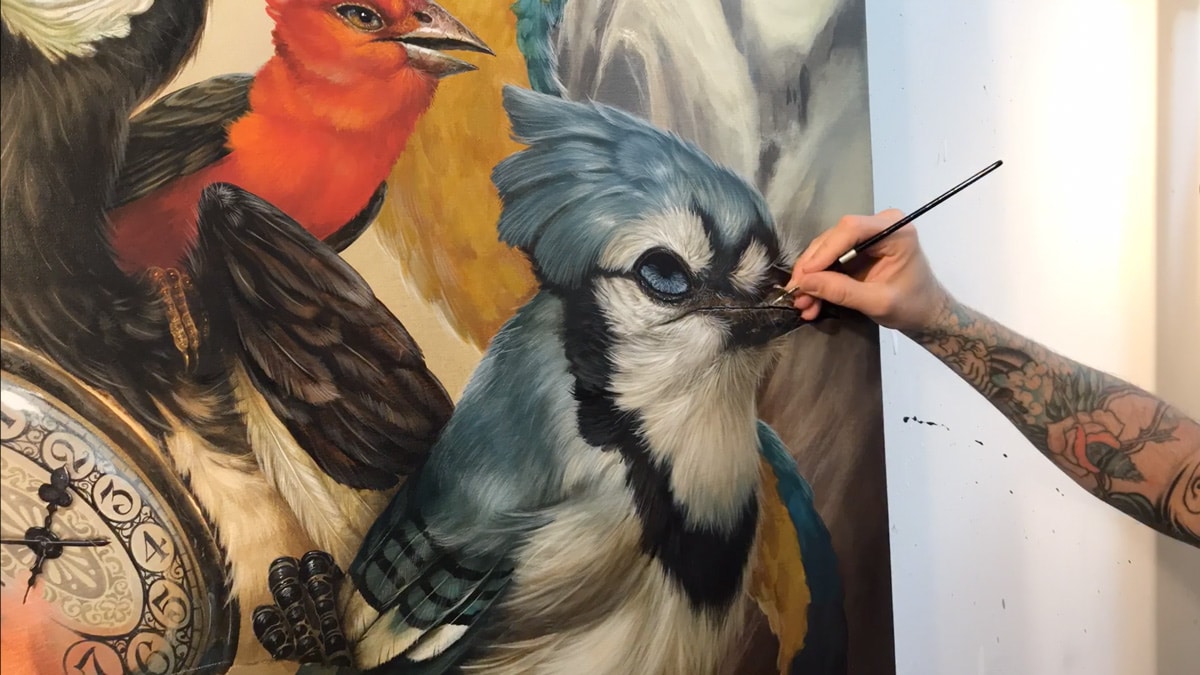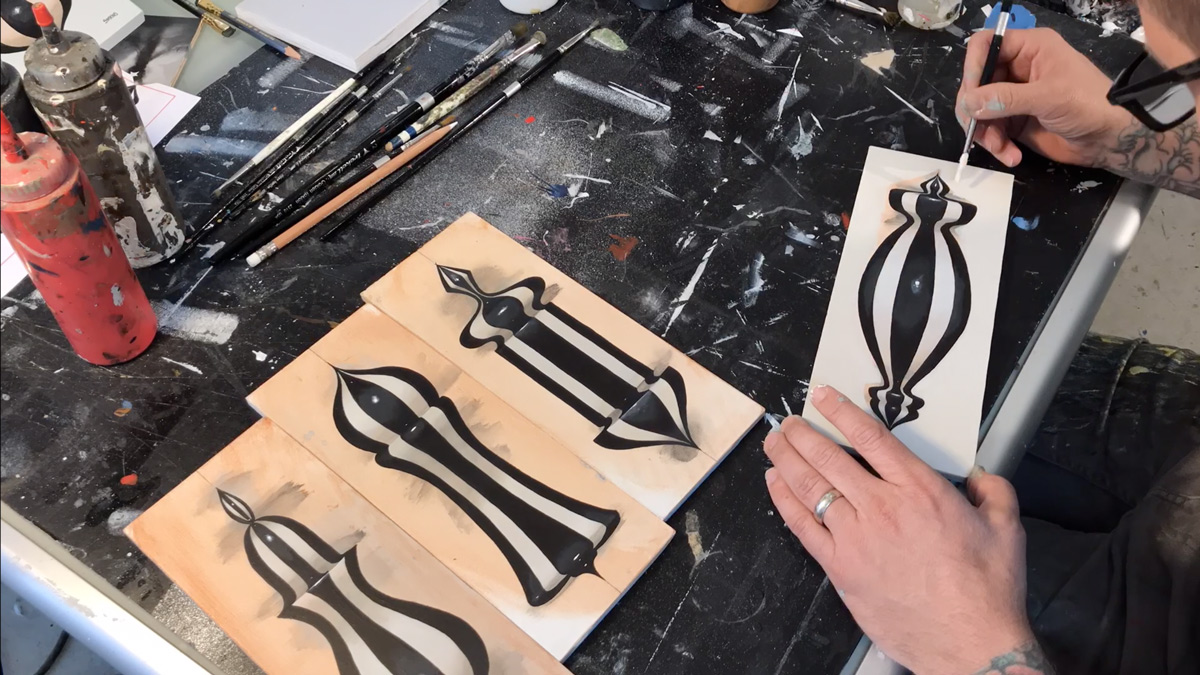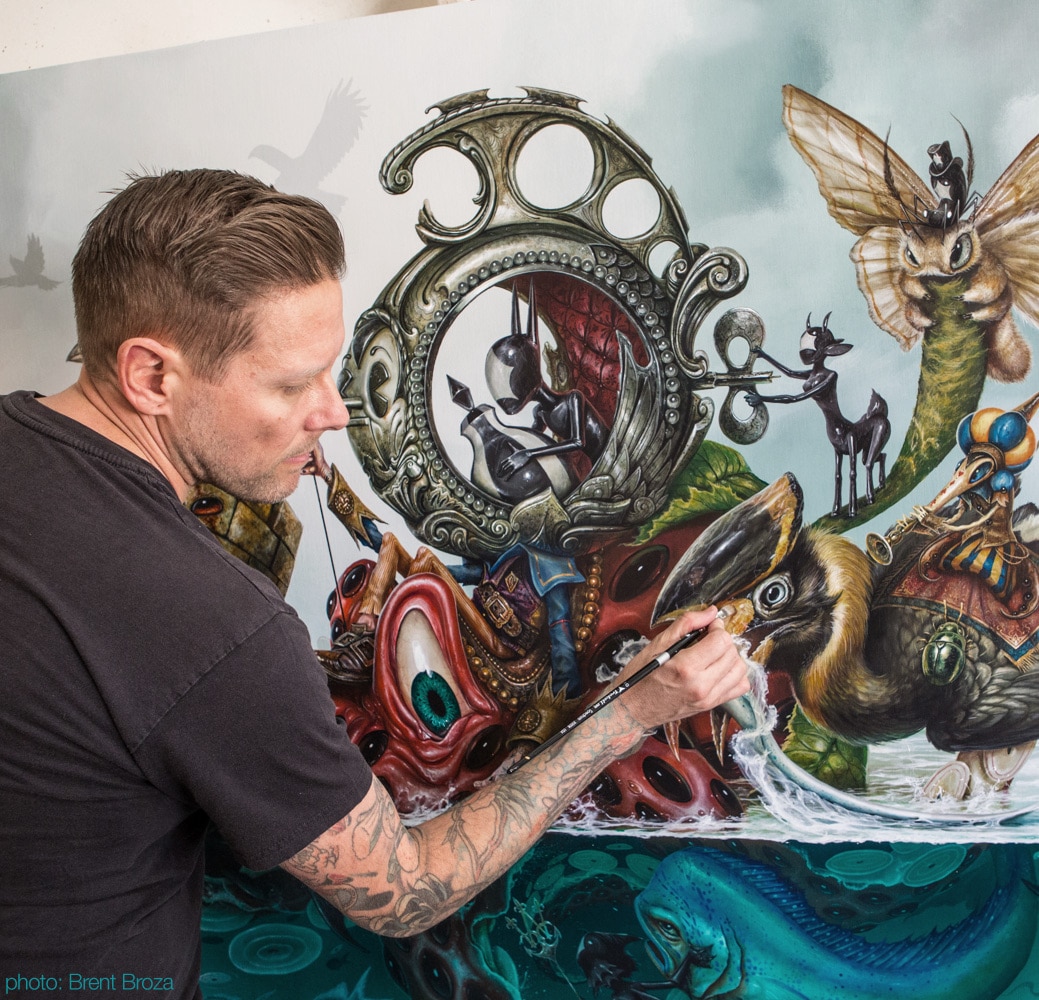
Prolific artist Greg “Craola” Simkins presents a new series of surreal work in his solo exhibition The Escape Artist. The native Californian has a long career that has seen him move from graffiti artist to video game designer to full-time fine artist, while still maintaining a presence on the streets. Masterfully using acrylics, Simkins’ canvases burst with color and fantasy, each pulling the viewer into the mythical worlds he’s created.
With The Escape Artist, Simkins brings viewers deep into this imaginary world, The Outside. Filled with new and familiar characters, an entire narrative explodes across the new body of work. In tandem with his paintings, Simkins also presents a set of charcoal drawings that give a glimpse into his creative process and demonstrate how well rounded he is as a creative.
To celebrate the show, which runs until June 16, 2018 at KP Projects on La Brea Ave in Los Angeles, we chatted with the artist about his creative process and how The Escape Artist came about. Read on for the exclusive interview.
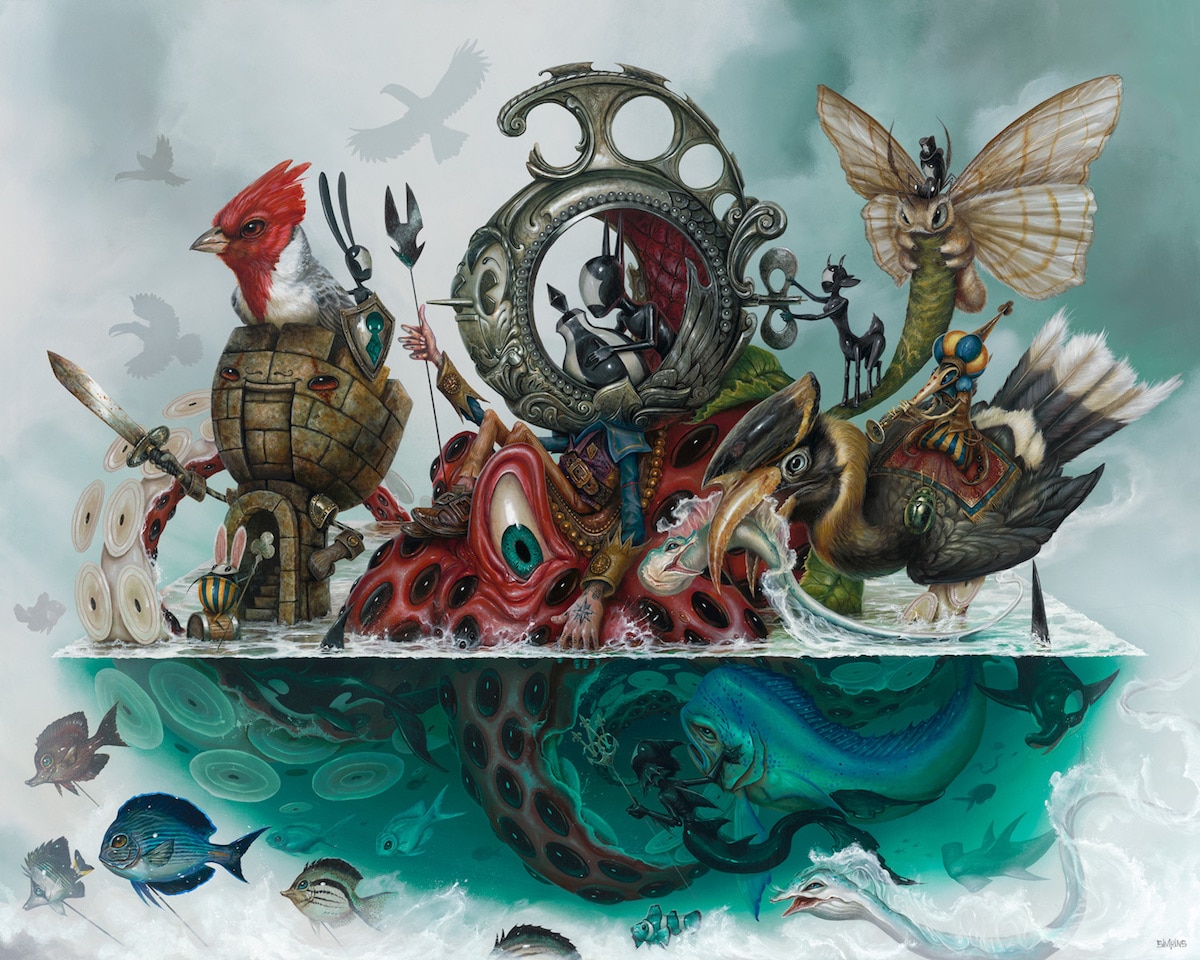
‘The Escape Artist’
Why the name The Escape Artist?
The idea of escape is getting lost in a daydream and wandering through one’s imagination. As I make art, this process is very important to me. It’s important in the planning stages as I just fill my sketchbooks with whatever interesting images that entertain me, and it is important at the composition stage where I lay out these ideas in their ideal situations so as to move onto the final stage of painting them.
Once I get to the painting stage, the concept is at most finalized, but with a bit of room for improvisation. Once I start painting, the muscle memory and mechanics take over and I will put on music, audiobooks, movies, podcasts, etc… but generally, find myself zoning out and falling into the process of painting which can be almost meditative. Next thing you know and 8 hours have passed by and something new has been created on the canvas. It’s an awesome feeling being in that “Escape Zone.”
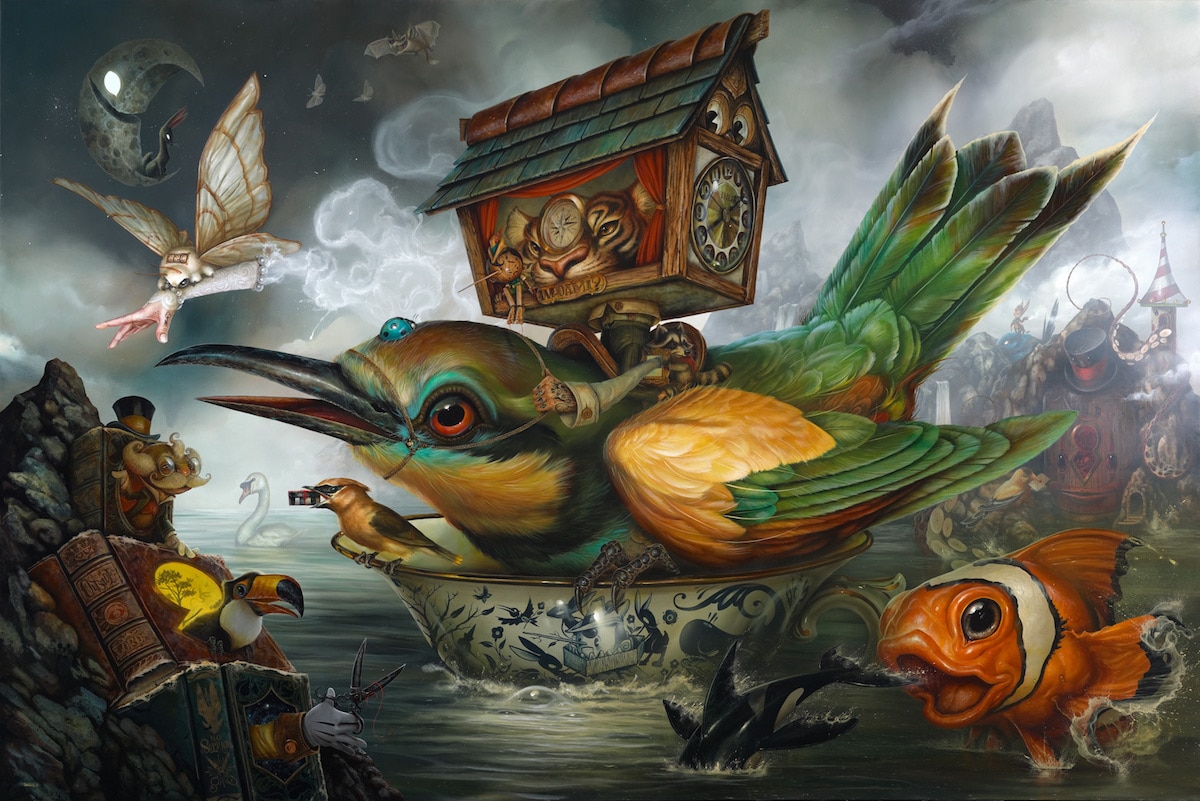
‘No Strings’
How did the concept for the exhibition develop?
I have been exploring this world that I made up called The Outside, and it is an extension of that, but I wanted to play with the idea of who runs the show and keeps the order in this place. You’ll notice my Starry Knights characters in many of these pieces and they are the puppeteers keeping everything in place.
It is their job to keep these uniquely shaped striped eggs safe so they can hatch into the large birds you see in my paintings. These birds serve different functions, such as ushering visitors back and forth between our world and The Outside—some control time and some are protectors and teachers for those lost in The Outside. There is so much potential in each one of these eggs that the Starry Knights have given their entire lives to protect them. As I sketch, these kinds of storylines dance around in my head and I write them down just to make sense of it all to myself. These stories become the framework for the show itself.

‘Corvid’
When working on an exhibition like this, how do you go about honing in on the concept and then bringing it to fruition?
It always starts with the sketches. I then redraw them to refine them and set about composing them. I then gather references so as to accurately paint the textures and patterns of each element. I transfer the image to canvas or panel and then paint away, one piece at a time. I rarely work on multiples at a time.
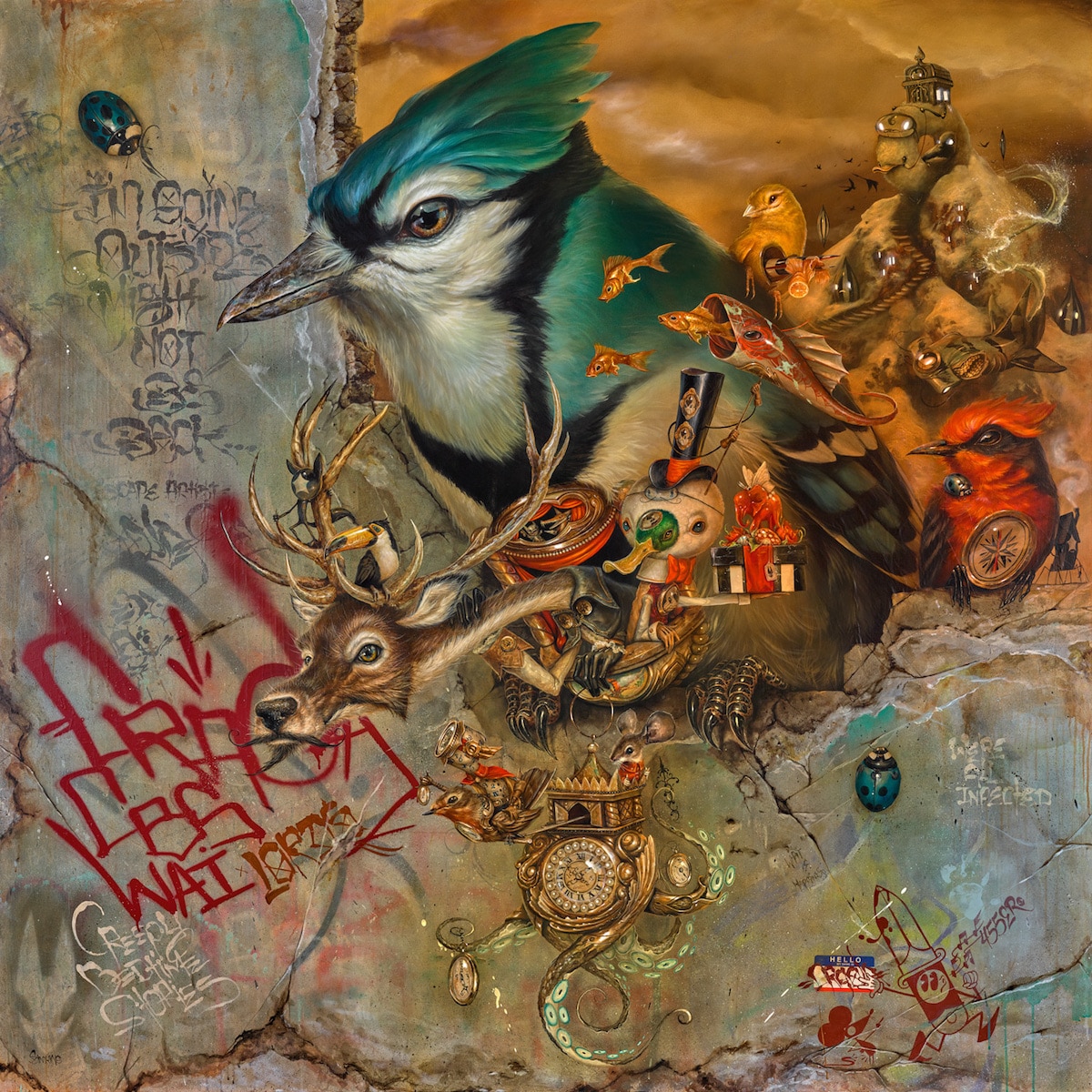
‘Beyond Shadows’
What’s an average day in the studio?
Once I get in, I answer emails, go through sketches and draw a little to warm up, maybe edit some video, finish my coffee, and then sit down at the easel and pour my paint for the day. Once that is in place, I will paint as long a stretch as possible. I don’t like taking breaks and will generally eat my lunch while working as well.
I try to keep in that creative headspace and block out the rest of the world. Around dinner time, I go inside and help out making food and getting the kids to the table, we spend time together as a family, put the kids to bed at bedtime, and then sit down to watch a show with my wife and work on drawings and concepts.
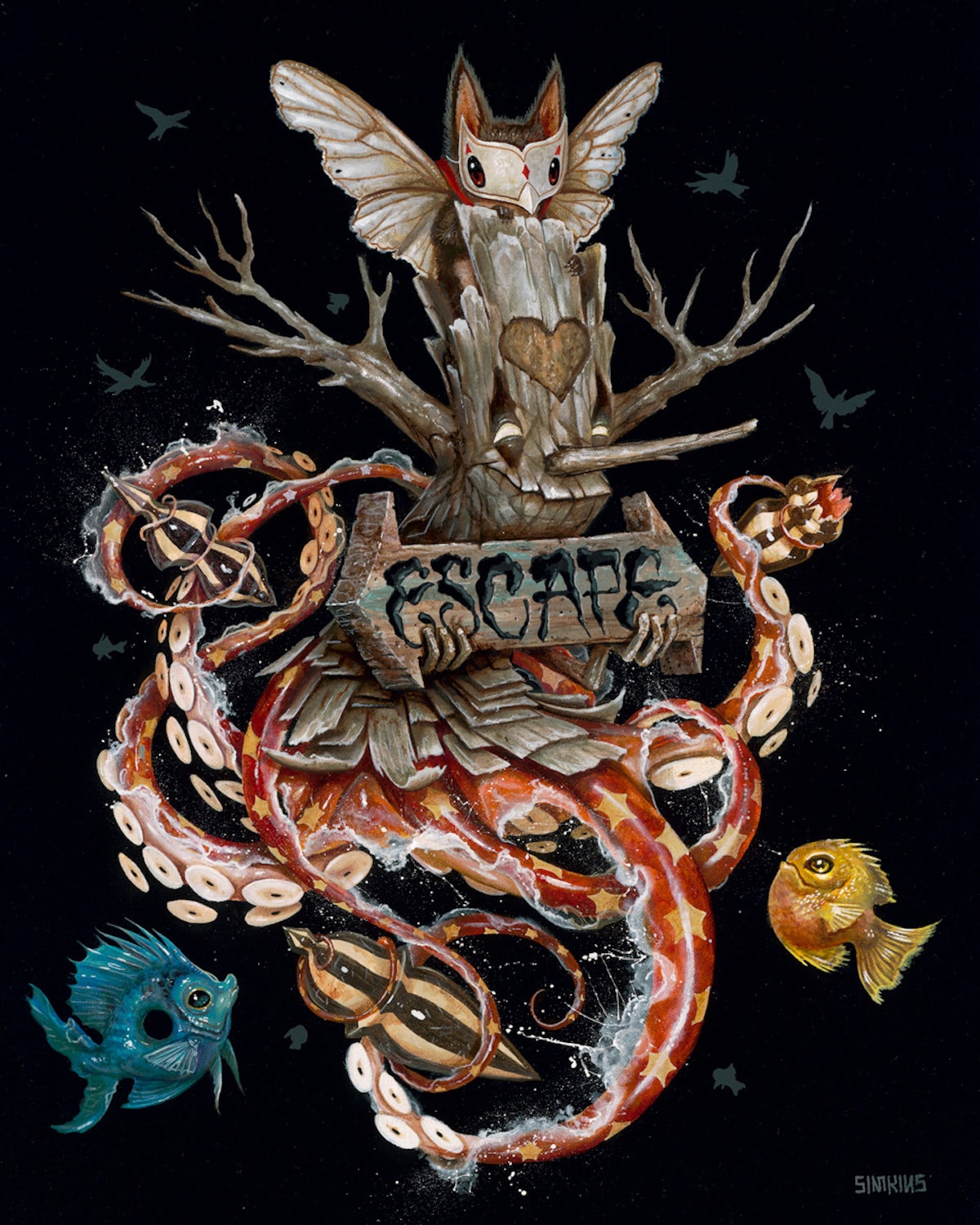
‘The Sweet Heart Tree’
How do Old Masters like Hieronymous Bosch inform your work?
I have been inspired by Bosch for most of my life. The density of his work and storytelling is beyond measure and I feel like I can breathe when I look at his work. It’s like looking into someone else’s imagination and finding common ground. There is one element I placed in my piece The Escape Artist as an homage and a nod to Bosch. Its a little bunny character riding on a barrel much like one of his barrel riders. I was hoping people would make the connection. It’s still my character, but the influence is definitely there.
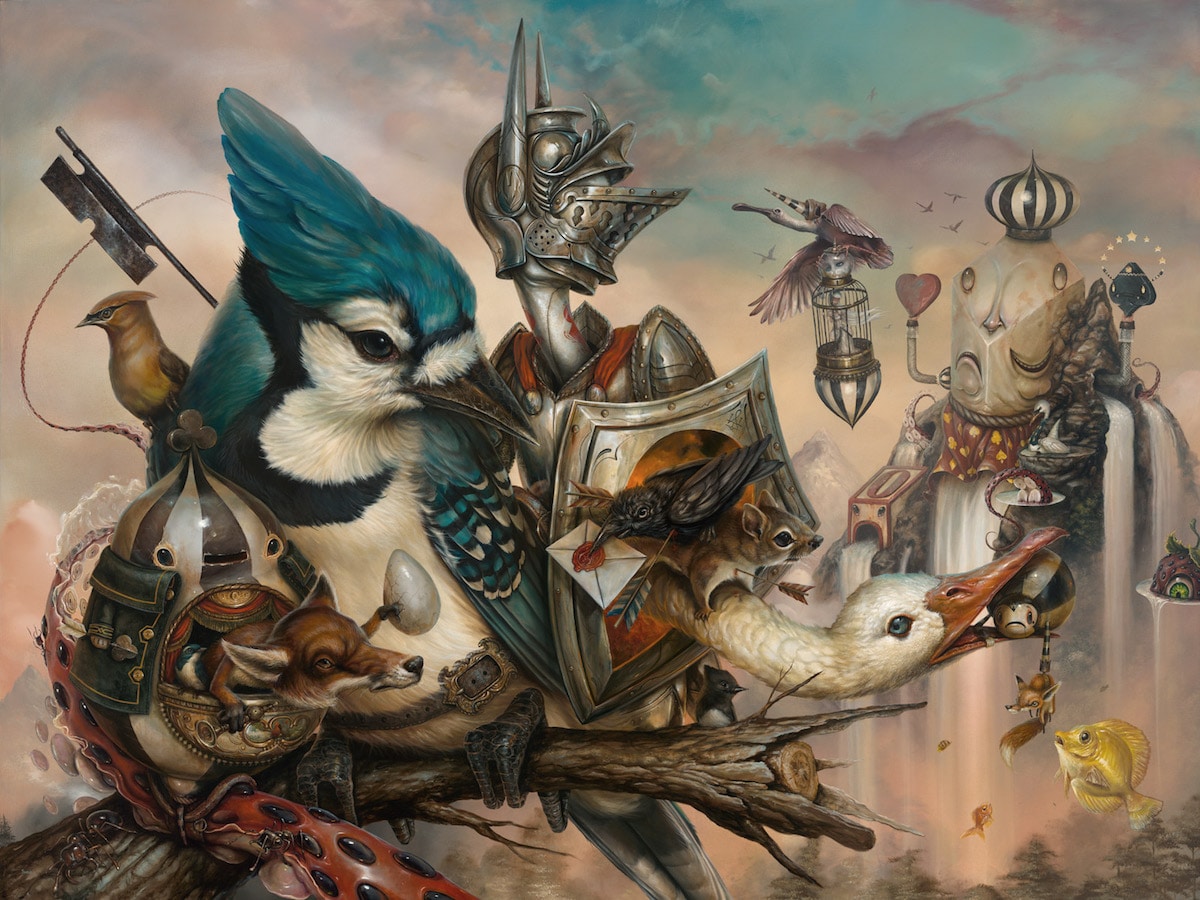
‘Good Knight’
Birds are key figures in your work. Where does your fascination with birds come from?
How could anyone not be fascinated with birds? They are these jewels, weapons, music boxes, and much more that dart around the sky as masters of the air. They defy gravity, they curiously watch us—waiting for us to make a move, they come in so many varieties, some create bonds with us, others taunt us, and some would even comfort us.
They are incredible creatures, and I have chosen to give them personalities in my work and in The Outside for all these reasons. The main bird in my work is Breeze, a large blue jay that befriends my character Ralf “The White Knight” and protects and teaches him the way of that world.
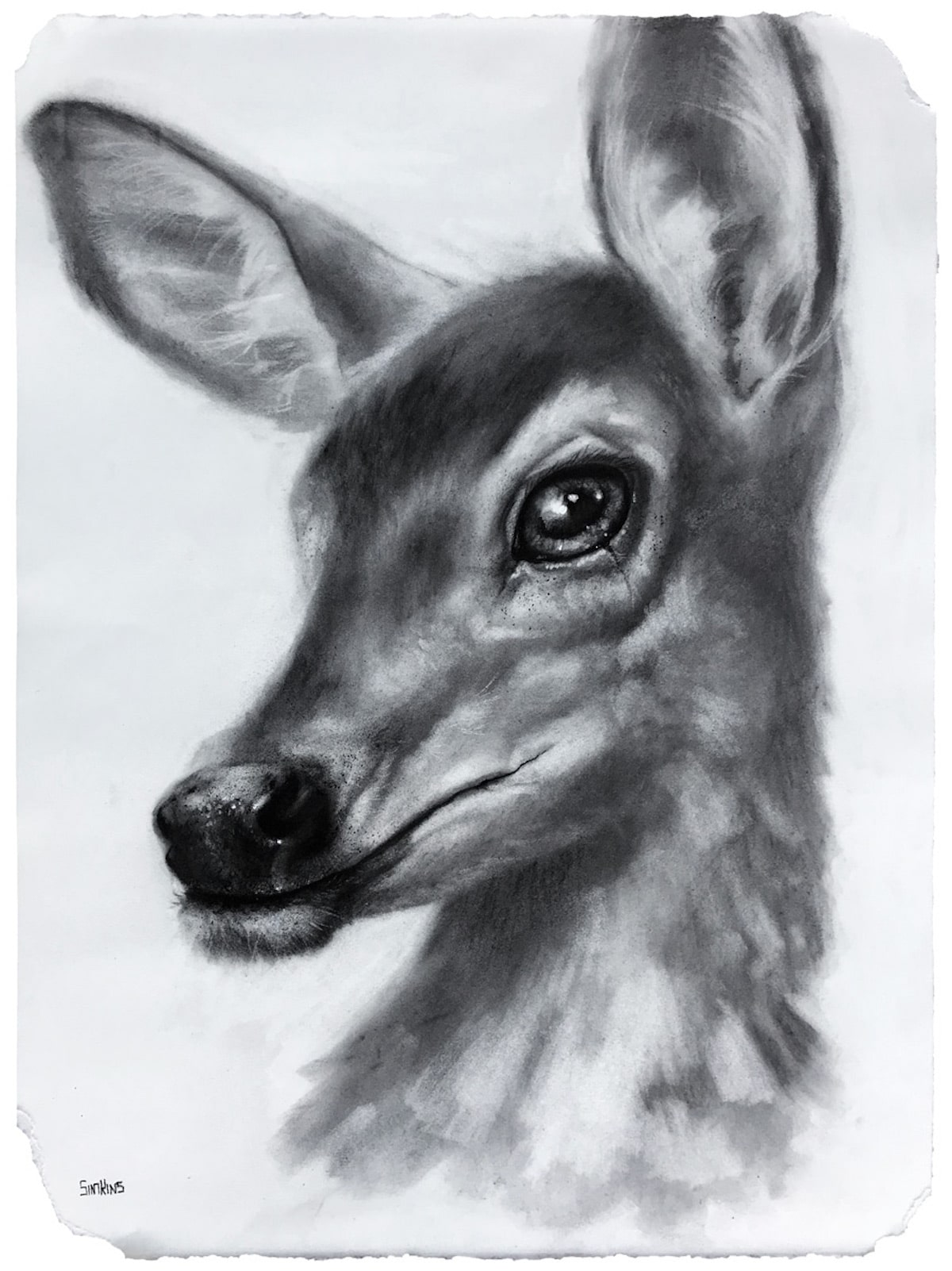
‘The Young Mayor’
The exhibition includes a number of beautiful works on paper. What’s your relationship with drawing and how is it part of your creative process?
It can be either to get an idea out as fast as possible so as not to lose it or something to later be refined into its own finished project. I enjoy getting the gesture of an idea to use later on in a piece, but sometimes I feel that gesture is beautiful in itself, even with all its flaws. It is the kernel of an idea and I chose to share some of those in this exhibition.
I also enjoy doing charcoal portraits which gives me a whole other way to study shape and form and mark making, which speaks to my other work. Working in multiple mediums always teaches me something new to add to each other.
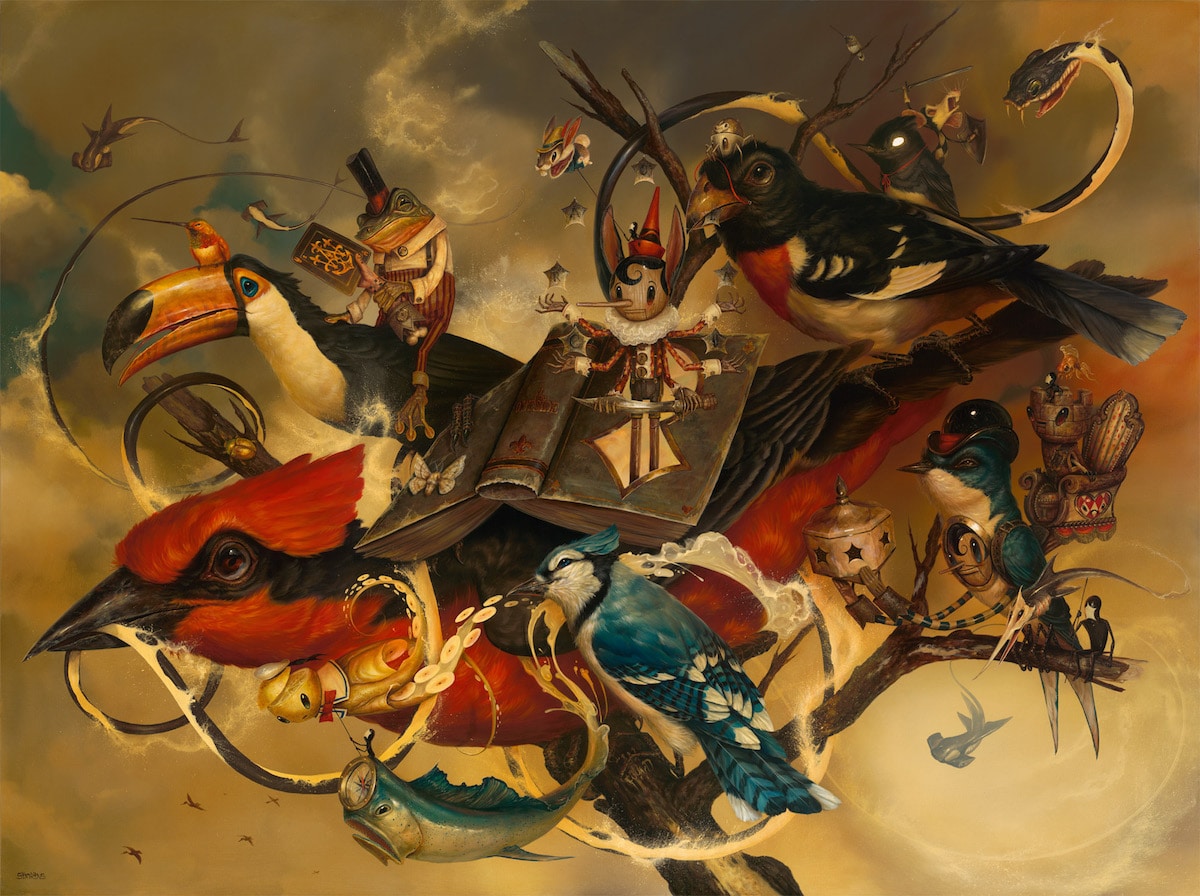
‘Where Am I’
What do you hope visitors to The Escape Artist come away with?
A sense of wonder and creative inspiration. I want people to be excited with the idea that exploring your imagination is healthy, it can be an escape from the mundane, depressing, sometimes horrible things in life. Storytelling is art, in all its various forms, and should be explored.
I also think people should realize that there are no rules which dictate what each individual has to create. I know my work isn’t for everyone, but the most important thing about it is that it is, for me, my form of escape. I want others to take away the fact that they can get weird with their art if they want to and not be held down by social pressures telling them that they can’t draw what doesn’t “make sense.” Make your own individual marks and see what happens.

‘Chief Roller’
Any upcoming projects you’d like to share?
There are a few things in the works right now that we will be unveiling in the near future, but for now, my solo exhibit The Escape Artist is on display at KP Projects Gallery in Los Angeles. I am also in the amazing graffiti and street art retrospective and behemoth, Beyond The Streets curated by Roger Gastman, also in Los Angeles. It’s a must-see.
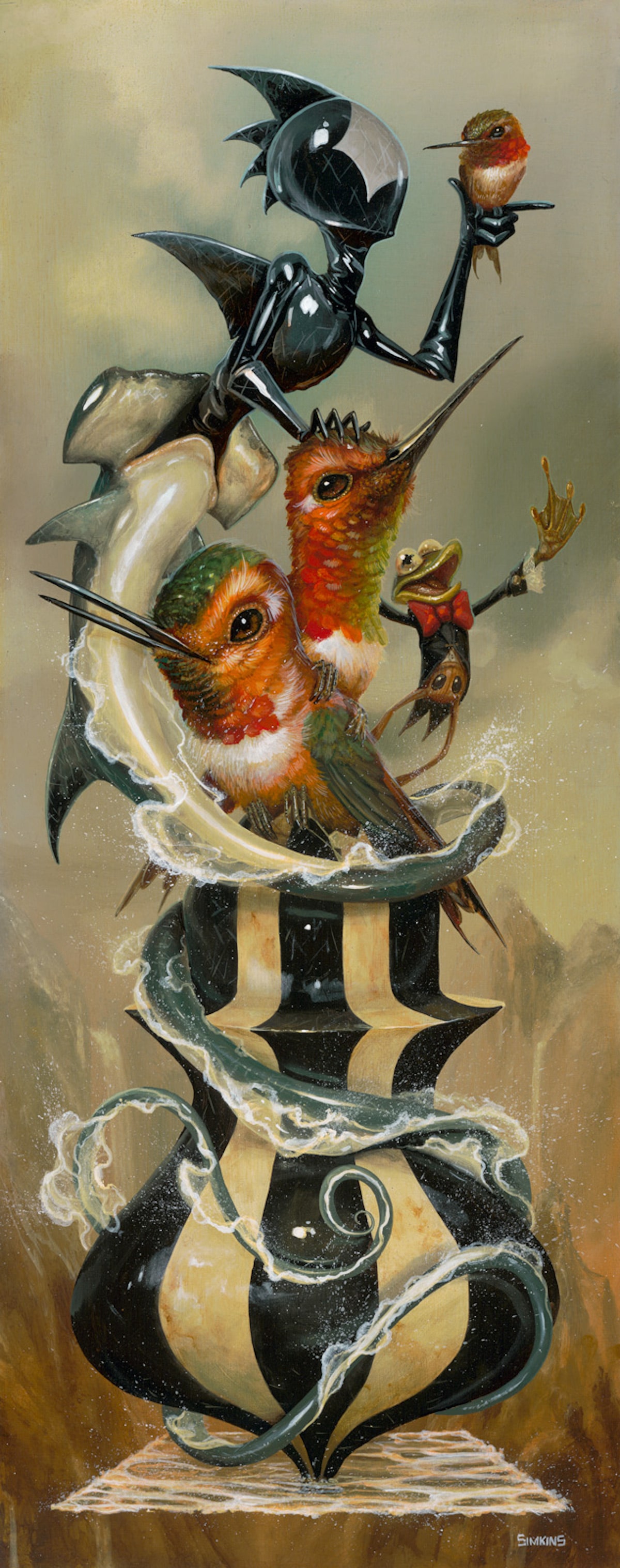
‘Then There Were Three’
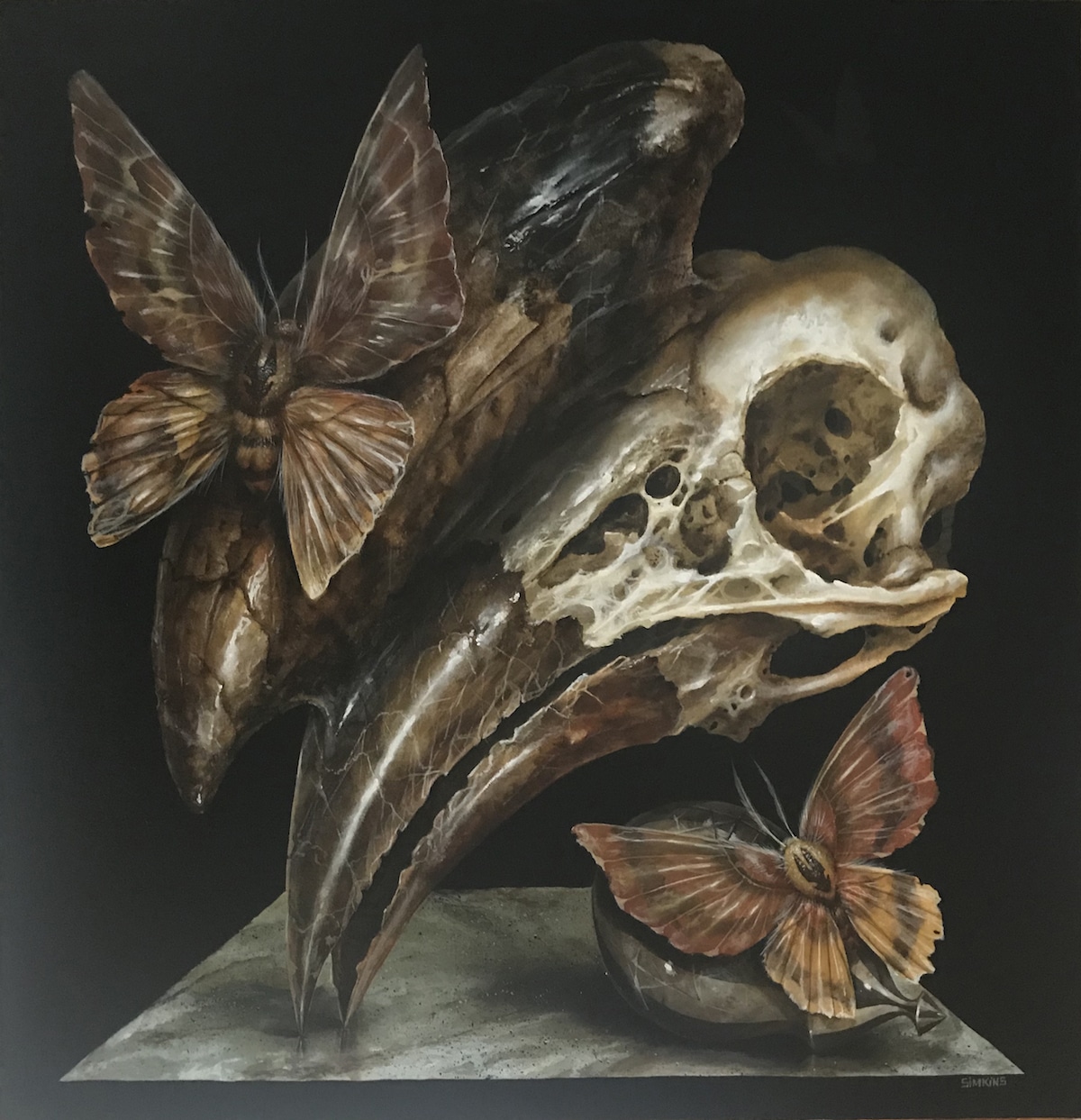
‘In Rotation’
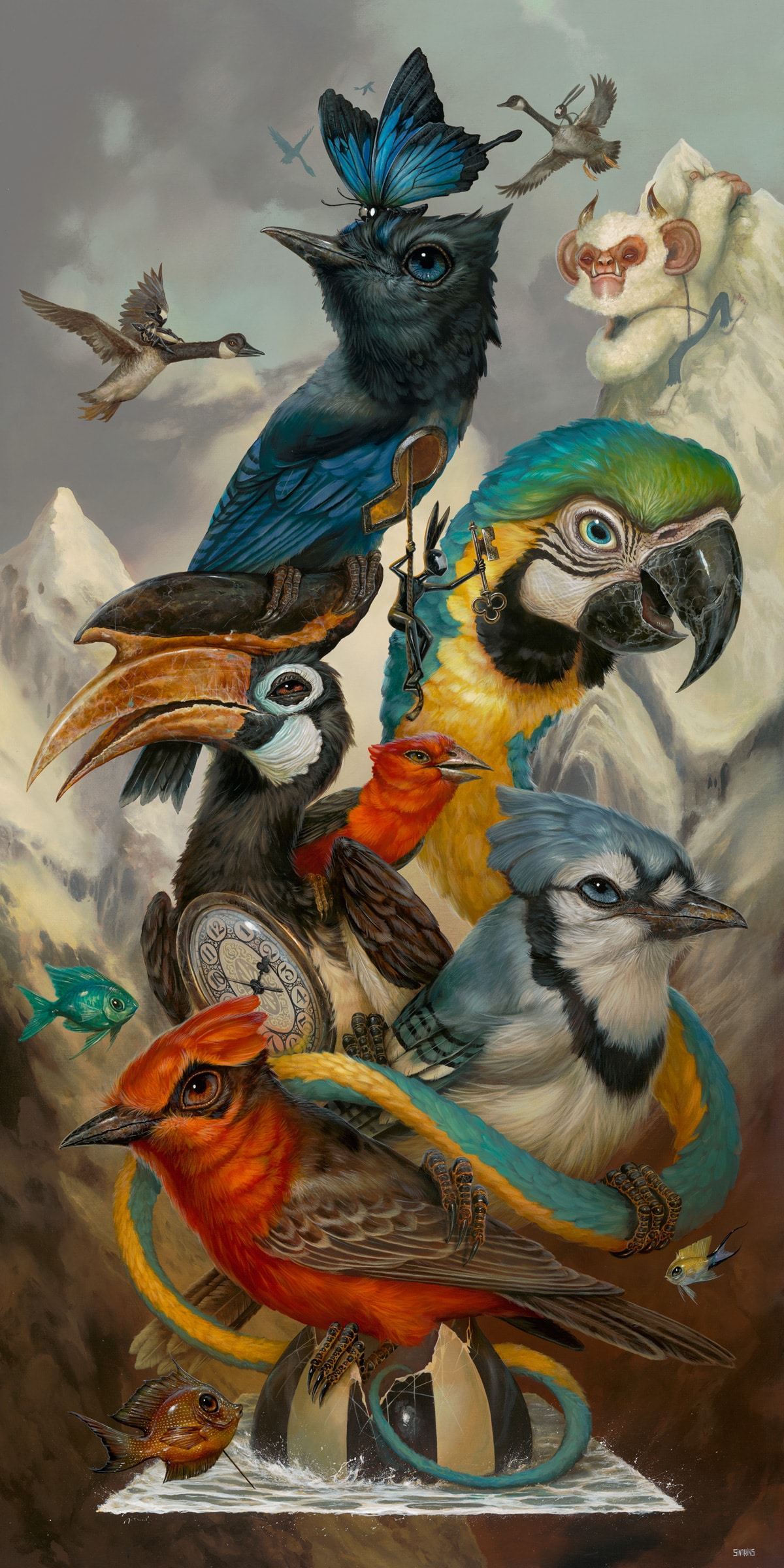
‘Hatchlings’
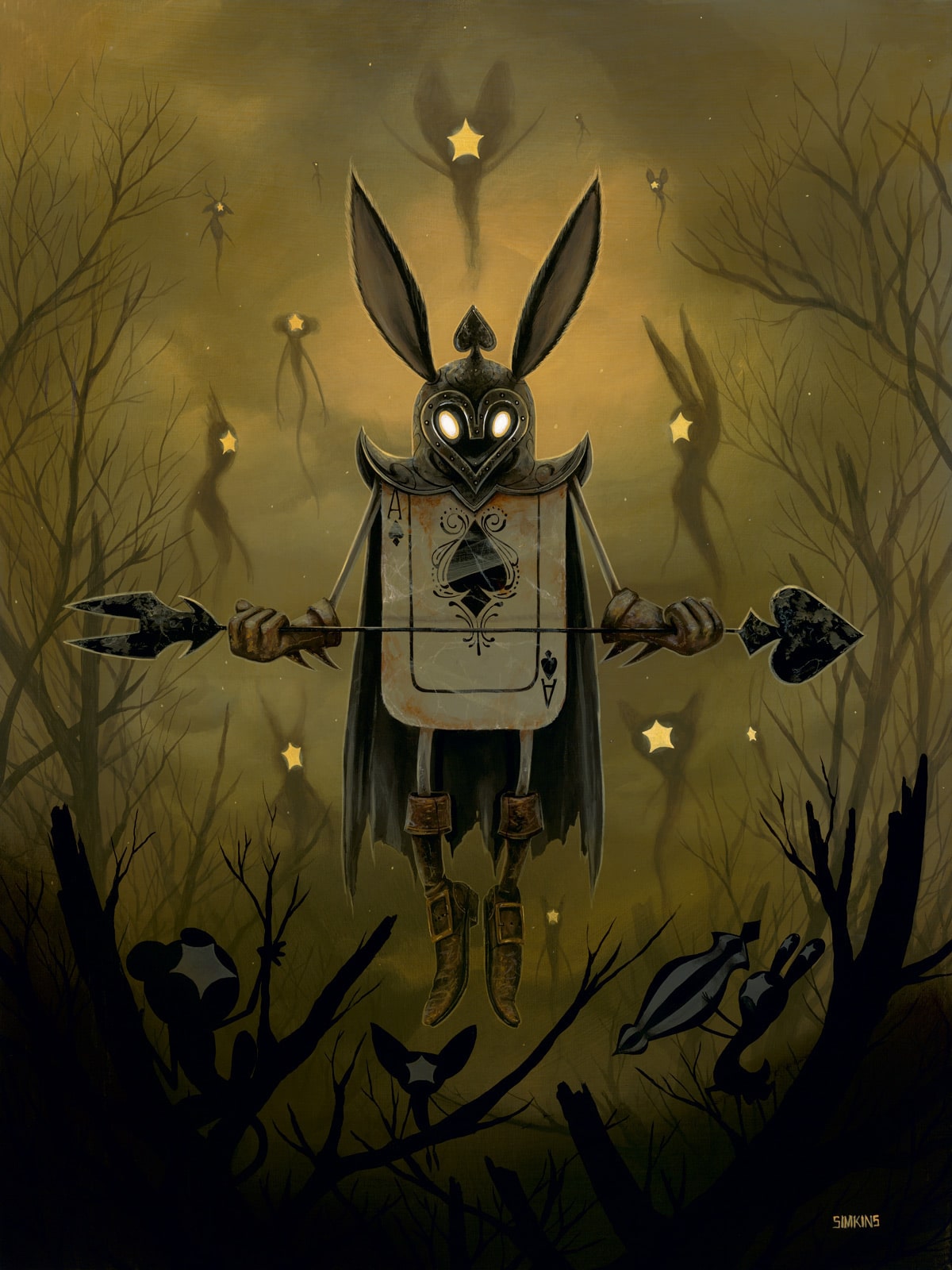

‘Try to Fit In’
